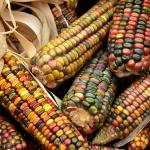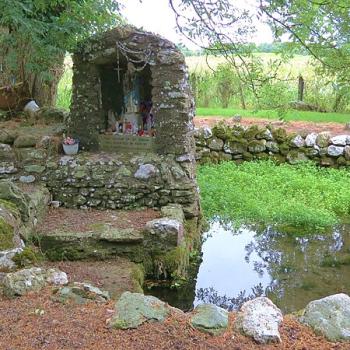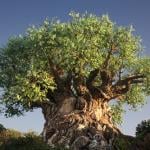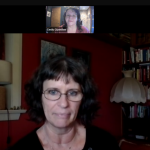 Life in a Pot
Life in a Pot
The leek, white and fragrant
spiral slim slicked rings
fall apart, float.
Life in a pot.
The green bean, pristine and simple
conjures childhood gardens,
Gram’s slim fingers pluck.
Life in a pot.
The carrot, deep and mysterious
hairy orange root crop
planted in the dark of the moon.
Life in a pot.
The squash, yellow and whole
strong and dependable,
firm gold fills the palm.
Life in a pot.
The broth bubbles and sweats,
aroma-swollen
lid gently chatters.
Life in a pot.
Life in a Pot first appeared in The Pantyhose Declarations
by Nan Lundeen. Visit her at www.nanlundeen.com.
A Mindful Lammas
As we thank Mother Earth for the first fruits of summer at Lammas, it is a good time to ask ourselves what we would like to bring forth in our own lives. Lammas can be a time of renewal through pausing to reflect on Earth’s bounty. At a time when food scarcity rather than abundance is on the rise as our planet inexorably warms creating floods, drought, wildfires and extreme weather, how can we bless Her with mindful thanksgiving?
There are many things, of course, but in keeping with the season of celebrating the squash, the carrot, the onion, the green bean, I have chosen to find new vegetarian recipes. I have hit the jackpot! This website, The Eco Guide, lists 49 vegetarian foods, describes their food/health value, tells us the amount of protein they bring to the table and provides three recipes for each item.
It is not, however, a vegan list. It includes cheese, one of my favorite foods, but alas, especially when coming from dairy cows, one of the greenhouse gas offenders. Taken as a whole, livestock farming tallies up about the same amount of greenhouse gases every year as emissions from combined transportation modes including ships, trucks, cars and planes. That according to the article “Your Questions About Food and Climate Change, Answered,” in The New York Times April 30, 2019. The article refers to data published last year in the journal Science.
It includes a chart that quantifies greenhouse gas emissions per food source. Beef, lamb and cheese are among the biggest offenders. Poultry, less so. Raising livestock involves deforestation; it produces methane from animals’ digestive systems; it burns fossil fuels in farm machinery, fertilizer production and trucking or flying meat to distribute it.
The U.S. government’s 2015-20 dietary guidelines recommend 5.5 ounces of protein daily and place in that category seafood, meats, poultry, eggs, nuts, seeds and soy products. They place legumes (beans and peas) under the vegetable category but also use the word, “equivalent” in recommended amounts. Upon further reading, you learn, for example, that two tablespoons of peanut butter or one-half cup of black beans is equivalent to two ounces of protein food.
Plant-based protein is the healthiest choice for the planet, and probably for our bodies, too, especially because some meat contains antibiotics, an overuse of which threatens our bodies’ ability to fight disease. When I asked for antibiotic-free meat in one grocery store where I shop, the meat counter man said, “Specialty meat is in a separate section over there.” Specialty meat?
That’s why this Lammas, I am especially grateful to our new neighbors. We are fortunate enough to live in rural southwestern Michigan where big gardens are possible. Our homestead, however, is wooded, so not enough sun for vegetables. Our neighbors planted a plentiful garden this year and welcomed us to come over and pick what we need. The kale has been dark green and curly, the cucumbers crisp and the zucchini folds itself beautifully into bread.
Blessed be.














